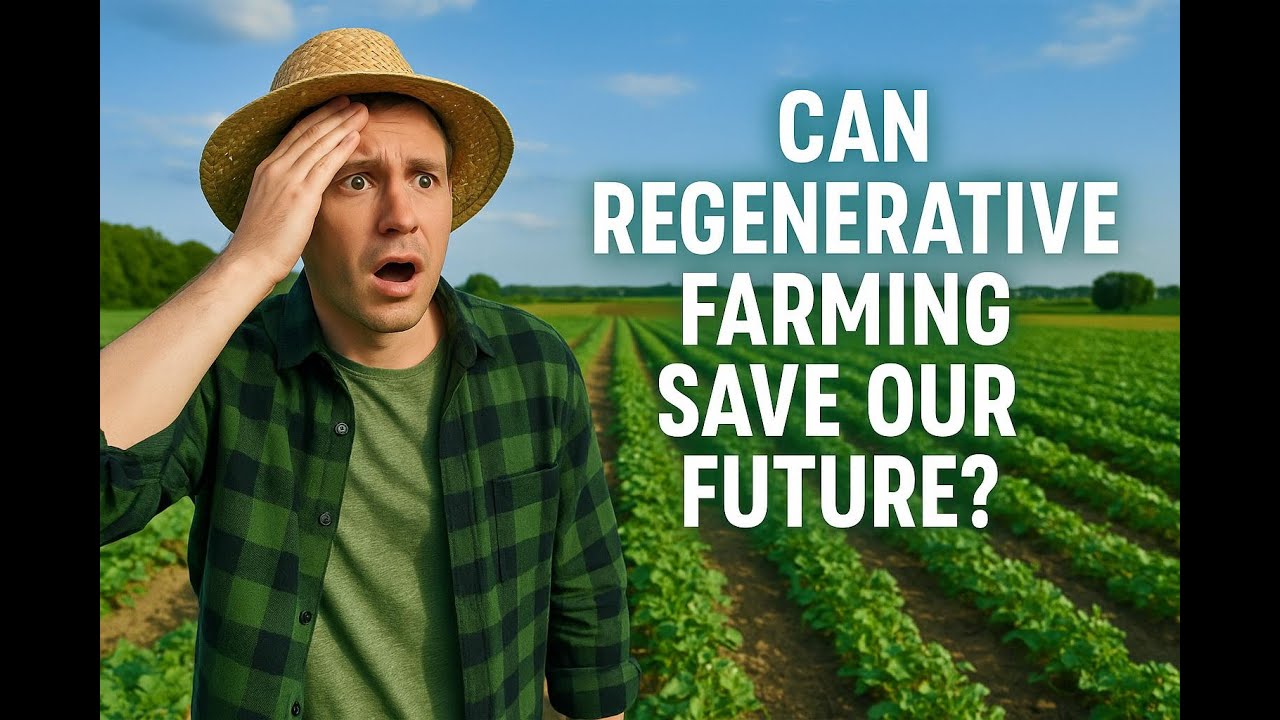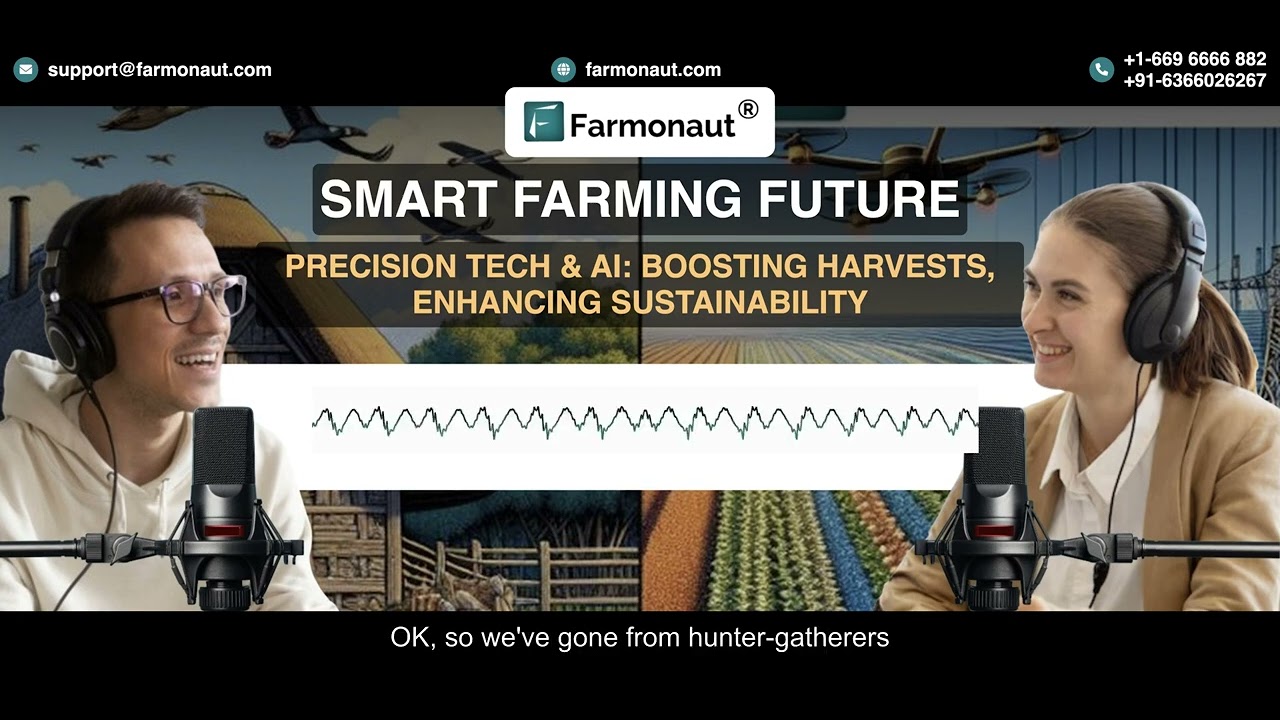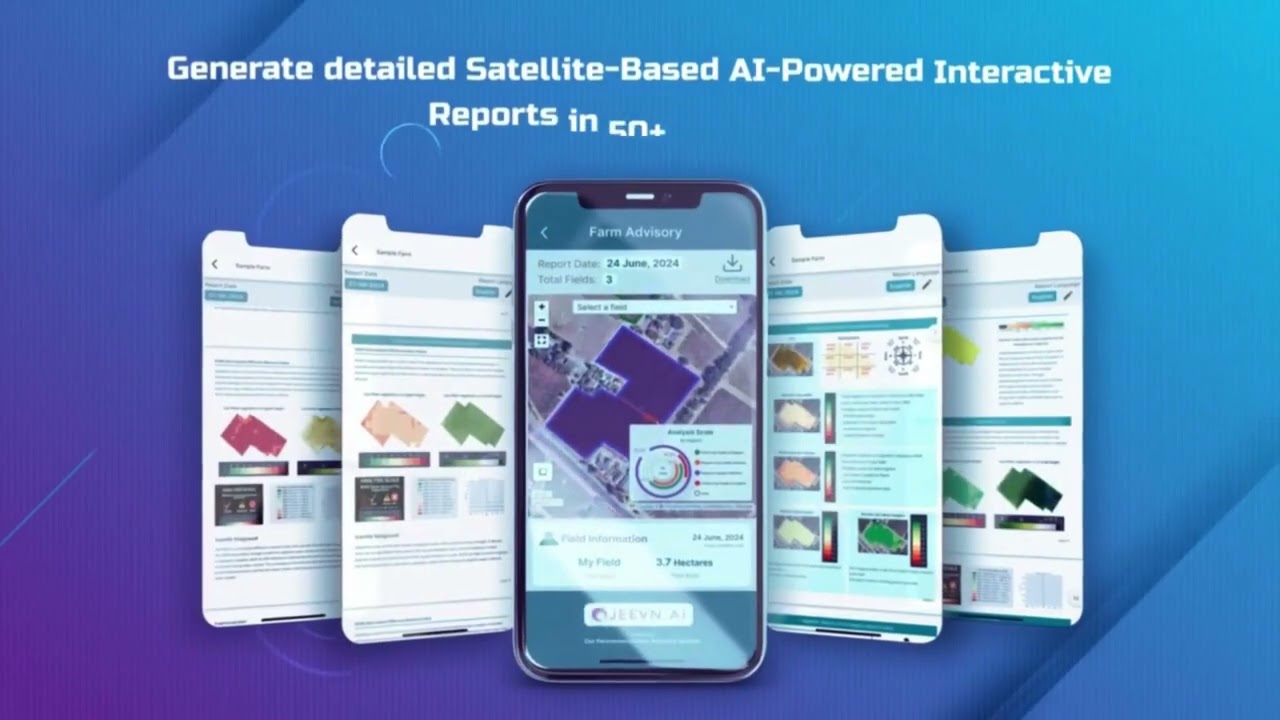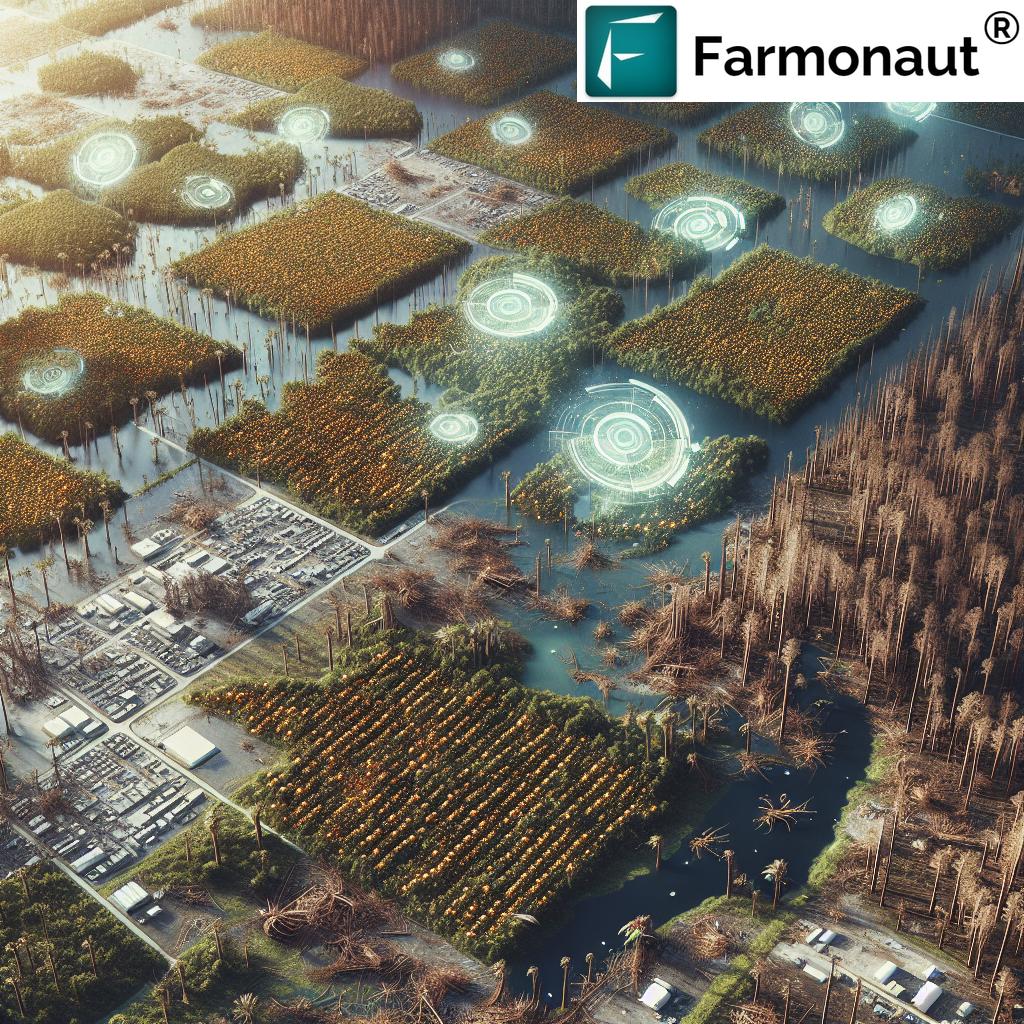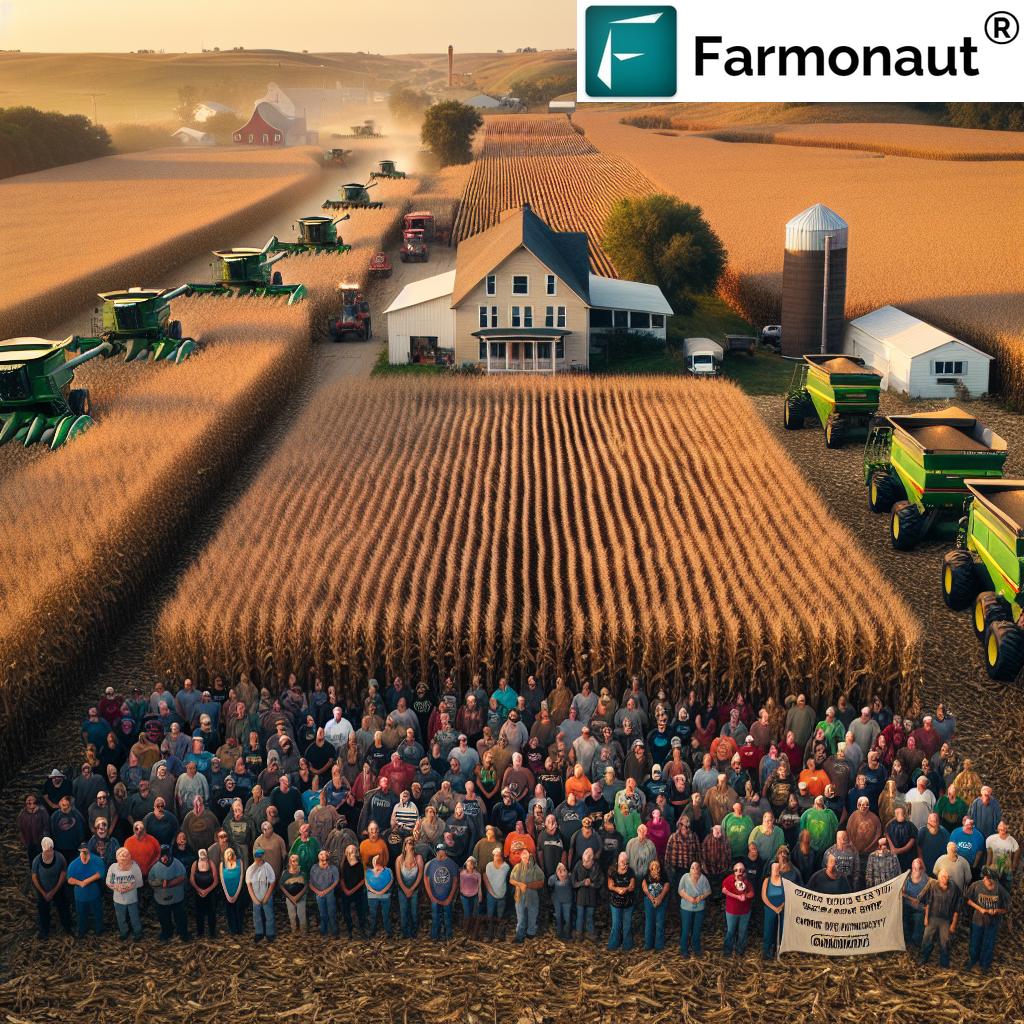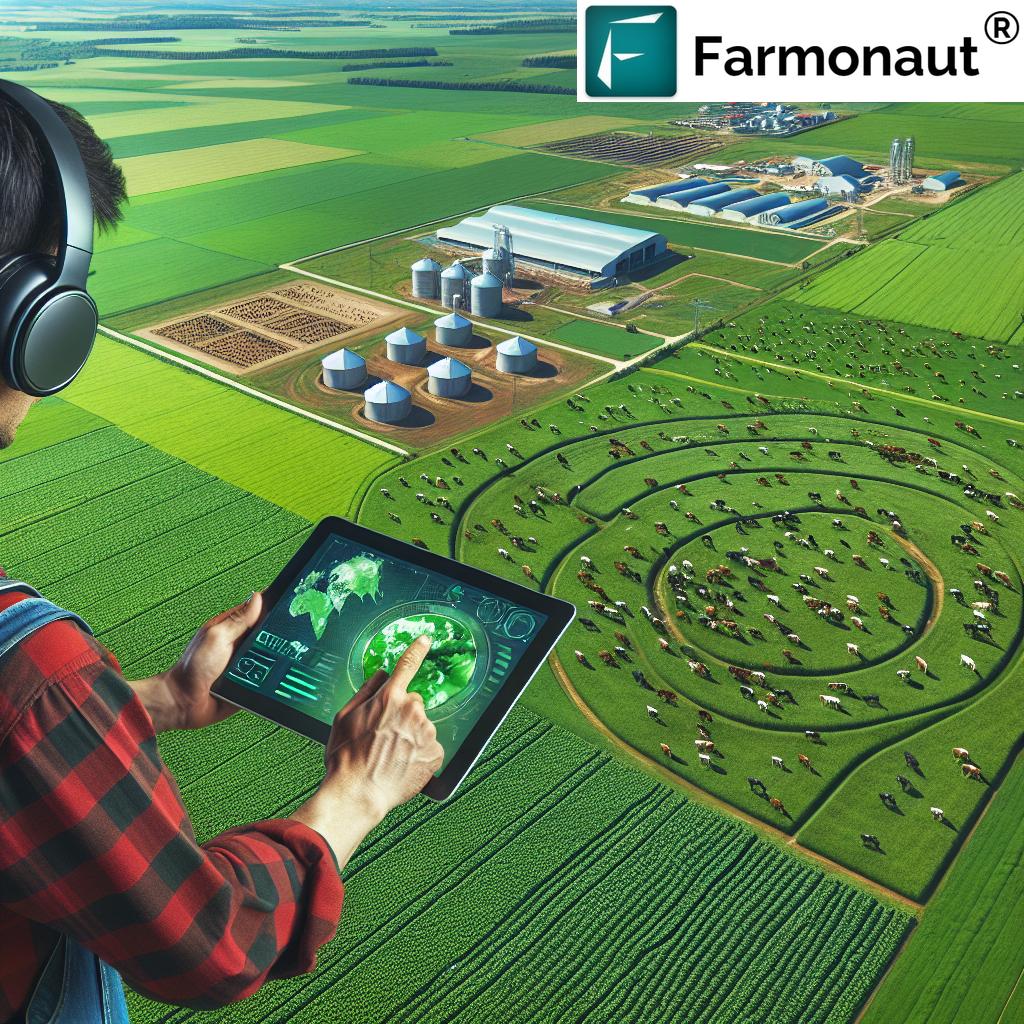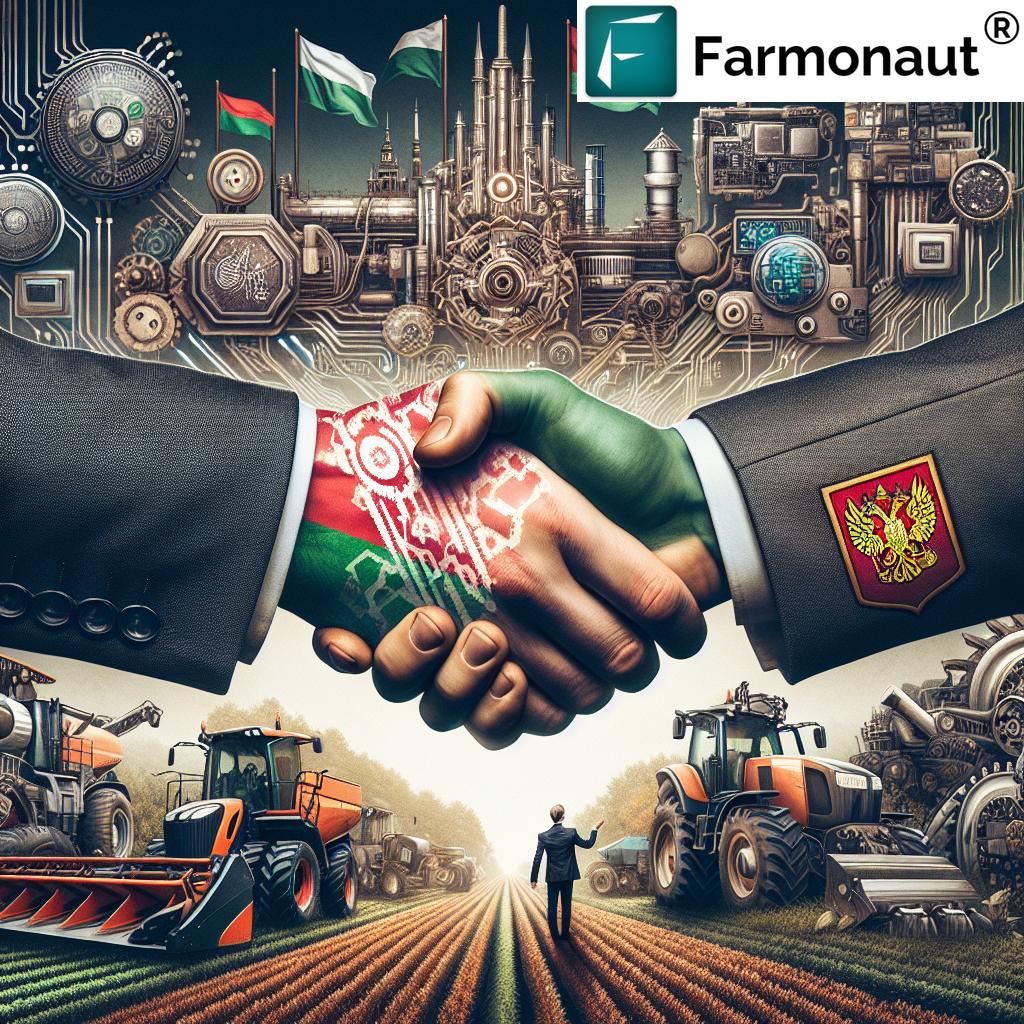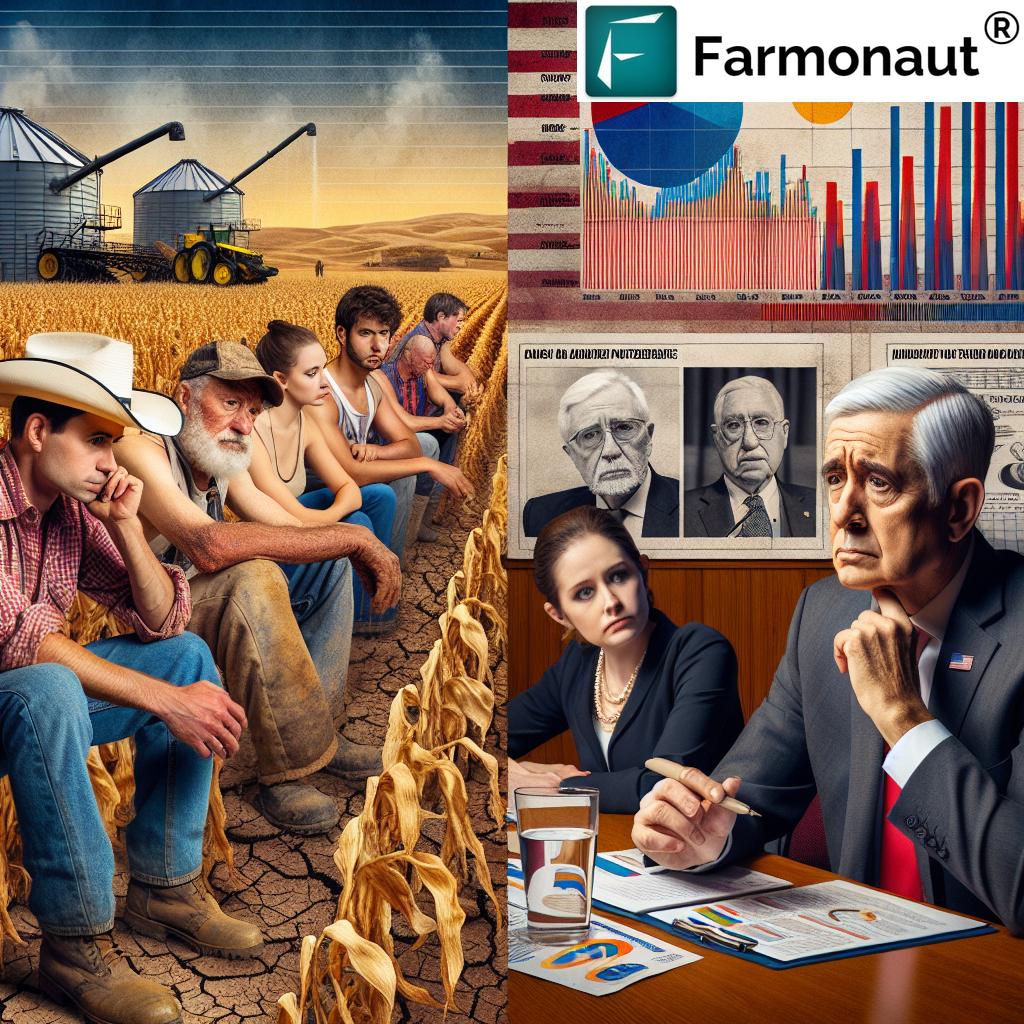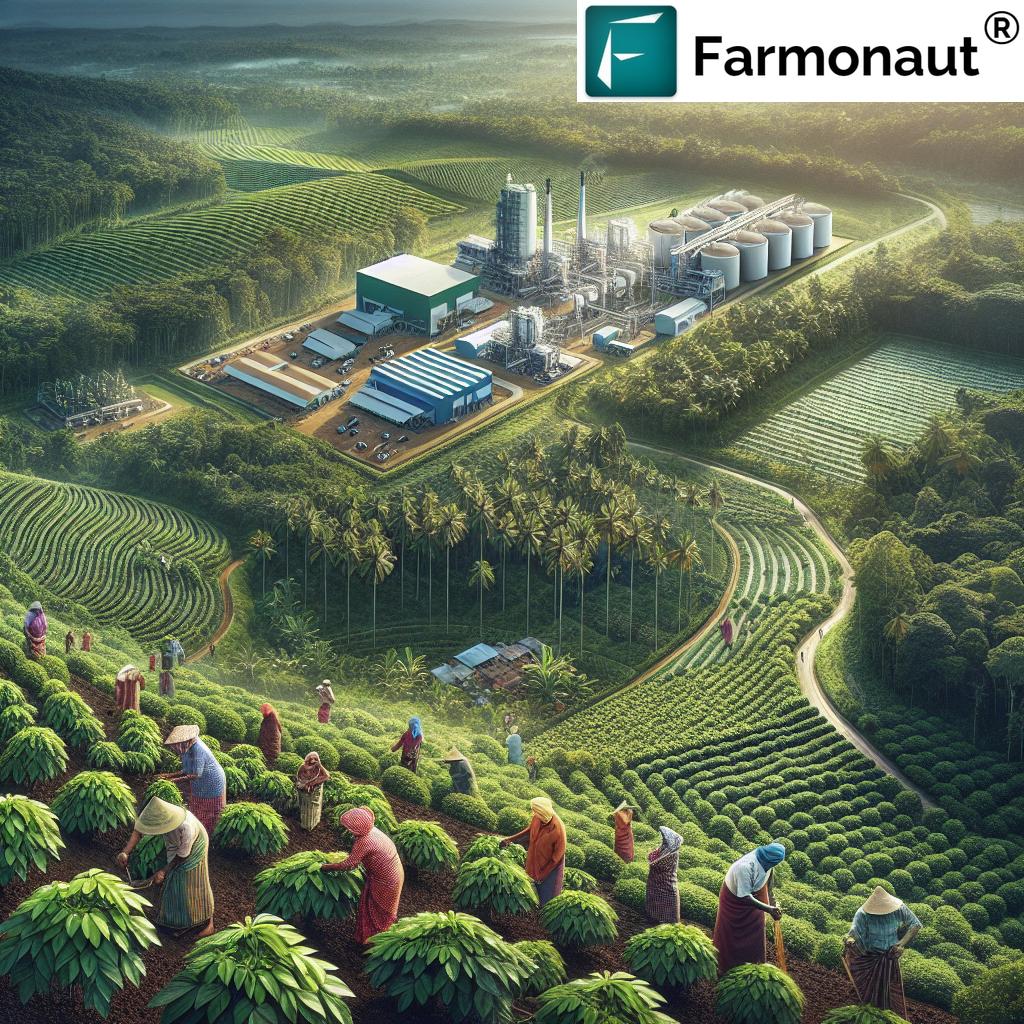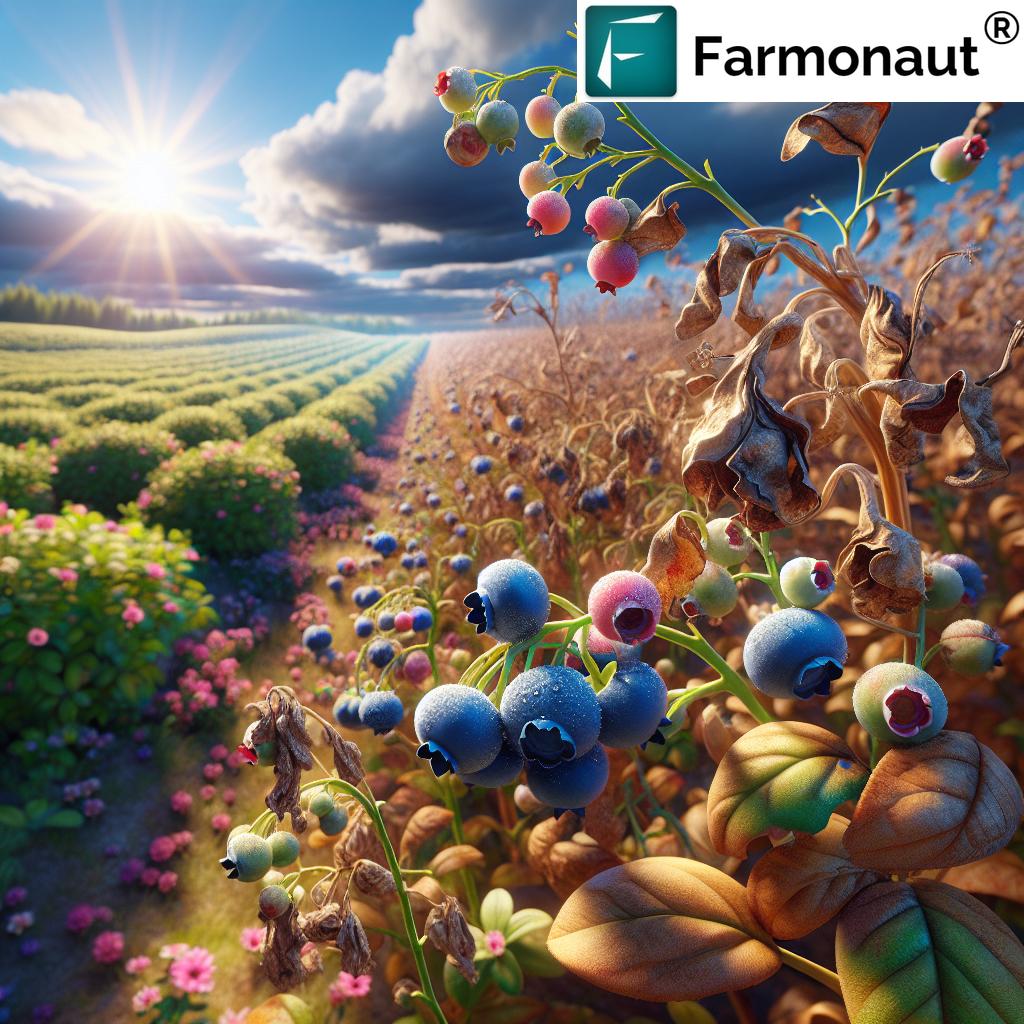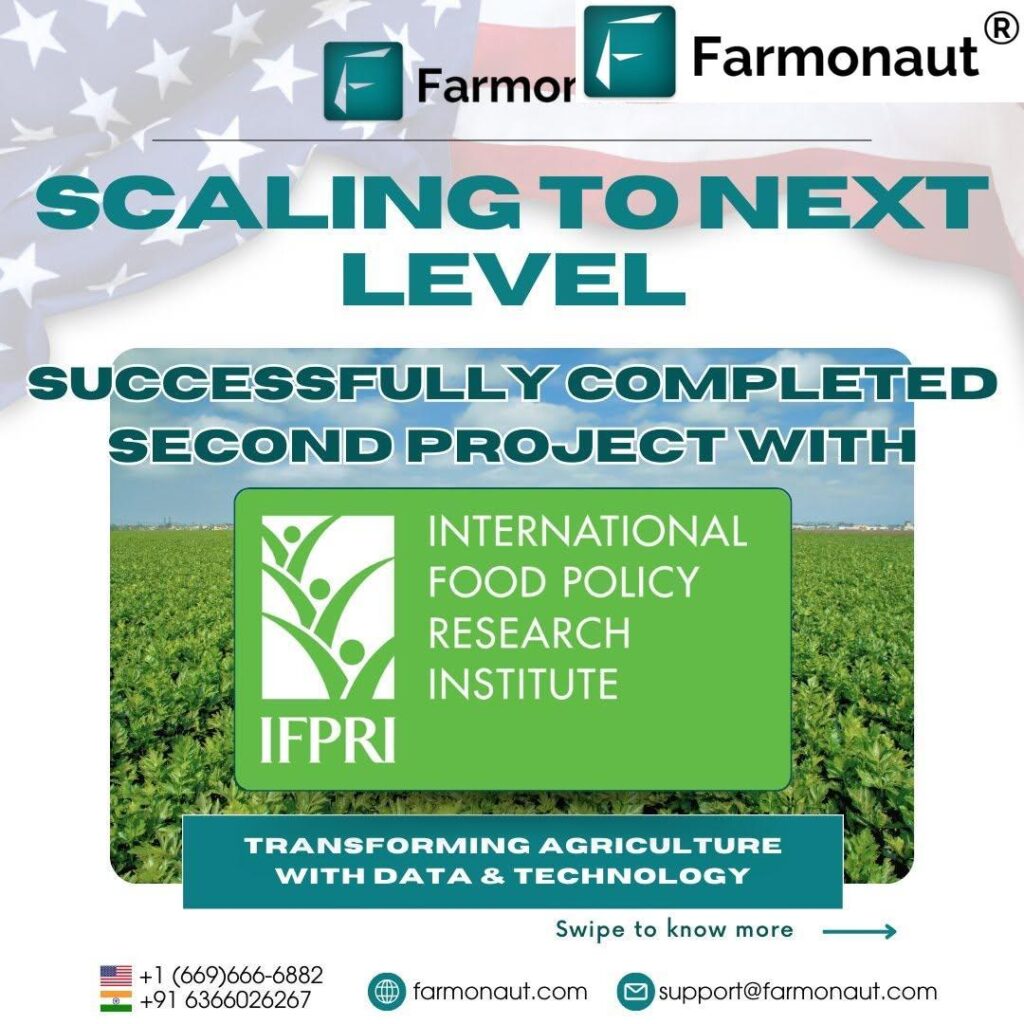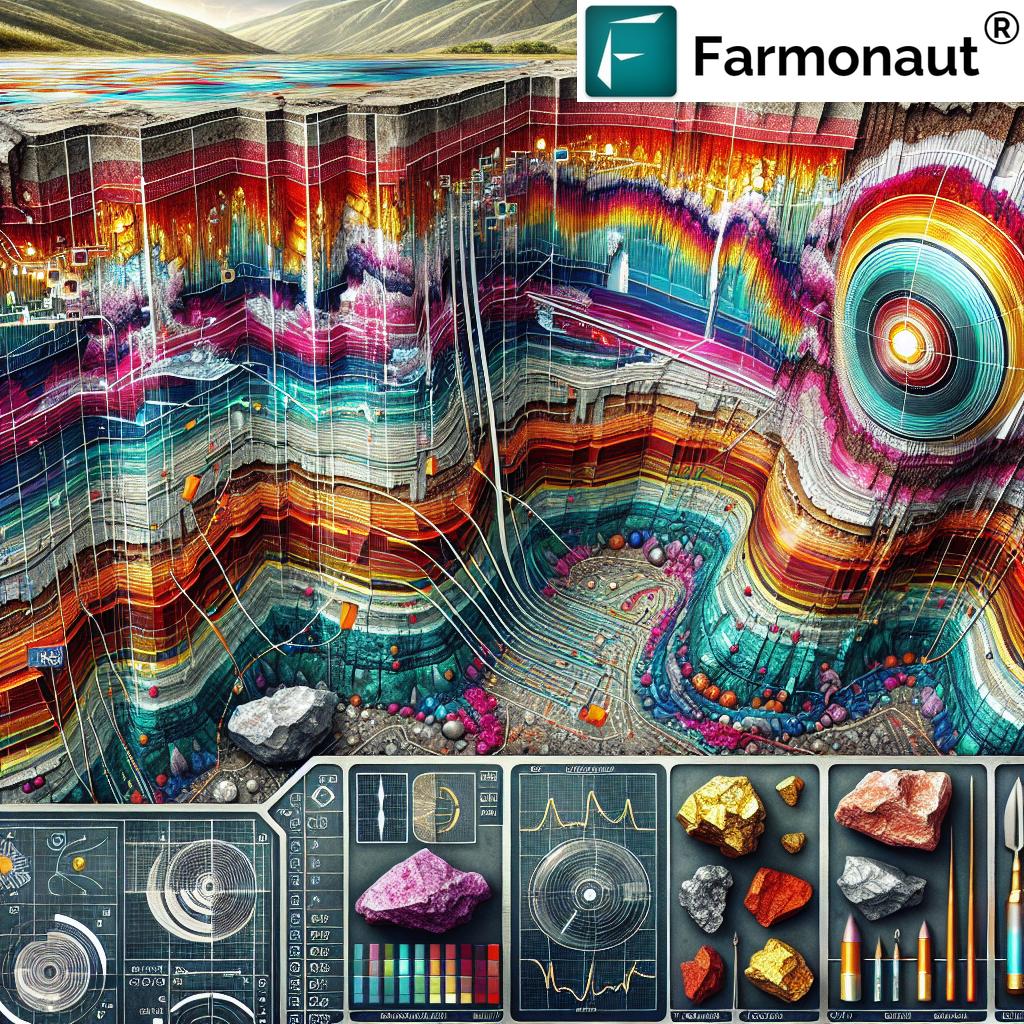Current Events Agriculture 2025: Sustainable Farming News
Table of Contents
- Sustainable Farming in 2025: Advancing Agriculture Through Innovation and Responsibility
- Key Trivias: Global Impact of Sustainable Farming
- Current Events Agriculture 2025: Overview & Context
- Sustainable Agriculture Trends Comparison Table 2025
- The Role of Innovation & Precision Farming in 2025 Agriculture
- Regenerative Principles: Carbon, Soil, and Health
- Circular Economy Models and Reduced Agricultural Waste
- Diversified Cropping Systems & Localized Food Networks
- Technology Adoption: AI, Satellites & Advanced Sensing
- Policy Frameworks & Market Dynamics
- Challenges Facing Sustainable Farming in 2025
- How We at Farmonaut Empower Sustainable Agriculture
- FAQ: Current Events Agriculture 2025 & Sustainable Farming
- Conclusion: Laying the Foundation for a Resilient Agricultural Future
“Over 60% of new farming innovations in 2025 focus on regenerative and sustainable agriculture practices worldwide.”
Sustainable Farming in 2025: Advancing Agriculture Through Innovation and Responsibility
As the world faces mounting environmental challenges, a growing population, and the ever-increasing need to secure our food systems, sustainable farming in 2025 has emerged as a critical topic within the agricultural sector. The landscape of farming today is marked by increasing efforts to balance productivity with environmental stewardship, all the while ensuring food security and preserving natural resources for generations to come.
This article explores the latest developments, trends, and challenges shaping sustainable farming in 2025. From the widespread integration of regenerative practices and revolutionary new technologies to policy frameworks and market shifts, current events agriculture in 2025 is far more than a collection of disconnected progress—it is a movement driven by responsibility, innovation, and collaboration.
Key Trivias: Global Impact of Sustainable Farming
“Global investment in sustainable agriculture reached $50 billion in 2025, a 40% increase from the previous year.”
Current Events Agriculture 2025: Overview & Context
In 2025, sustainable farming and agriculture are no longer niche practices. They have become the cornerstone of modern agriculture—a sector rapidly evolving due to cutting-edge innovations, global market shifts, and the escalating urgency of climate change. In this current events article sustainable farming 2025, we bring you a comprehensive examination of the challenges and triumphs shaping sustainable agriculture current events today.
- Sustainable agriculture now supports an ever-diversifying set of farmers worldwide in meeting both productivity and sustainability goals.
- Innovative technologies, including precision agriculture, artificial intelligence, and satellite monitoring, are redefining resource optimization and crop health management on farms large and small.
- The integration of regenerative principles—such as carbon farming, enhanced soil health, and agroforestry—is proving crucial in rebuilding ecosystems and addressing climate change mitigation.
- Adoption of circular economy models and diversified cropping systems is supporting waste reduction and building biodiversity, empowering farmers to secure their operations against market and environmental fluctuations.
- Policy and regulatory programs are actively propelling these trends by incentivizing conservation-minded practices and rewarding tangible sustainability achievements.
Sustainable Agriculture Trends Comparison Table 2025
To better understand the latest trends and their impacts, this table summarizes the most important current agriculture events and trends shaping sustainable farming in 2025.
| Trend/Innovation | Brief Description | Estimated Adoption Rate (%) in 2025 | Potential Environmental Impact | Key Challenges | Example Region/Country |
|---|---|---|---|---|---|
| Regenerative Agriculture | Focuses on rebuilding soil organic matter and increasing biodiversity through cover crops, reduced tillage, and rotational grazing. | 62% | Sequesters carbon, reduces erosion, increases resilience, improves soil health | Transition costs, knowledge gaps | USA, Brazil, Kenya |
| Precision Agriculture & AI | Use of artificial intelligence, sensors, and satellite imagery to monitor and optimize resource use in real time. | 55% | Reduces water and fertilizer waste, optimizes inputs, increases yields | Access to technology, upfront investment | Canada, India, EU |
| Circular Economy Models | Integrated waste management, composting, and nutrient recycling; minimal disposal of farm residues. | 43% | Minimizes greenhouse gas emissions, improves resilience | Infrastructure, education | Netherlands, Australia |
| Vertical Farming | Growing crops in stacked layers, often indoors, to maximize efficiency in space and resource use. | 29% | Water savings, reduced land usage, year-round crop production | Energy intensity, crop diversity | Japan, Singapore, UAE |
| Agroforestry | Integrates trees, shrubs, and crops/livestock for higher biodiversity and soil quality. | 35% | Increases biodiversity, improves water cycles, enhances carbon sequestration | Land tenure, training | Kenya, Brazil, India |
| Blockchain Traceability | Uses blockchain technology to verify the origin and journey of food products, enhancing transparency and consumer trust. | 22% | Reduces fraud, ensures authenticity, builds trust | Integration costs, standardization | UK, USA, Germany |
| Smart Water Management | Sensor networks and satellite technology for real-time monitoring and targeted irrigation. | 39% | Decrease in water usage, prevents over/under irrigation | Cost, connectivity | Israel, California |
| Crop Diversification (Polyculture) | Growing multiple crop species to increase resilience and system health. | 54% | Enhances biodiversity, reduces pest cycles, soil improvement | Logistics, market access | France, India, Ethiopia |
The Role of Innovation & Precision Farming in 2025 Agriculture
The face of sustainable farming current events is being transformed by rapid advances in technology, with precision agriculture now a central element. The use of innovative, data-driven agri-tech systems is empowering farmers worldwide to optimize resource use and improve the health of fields through real-time monitoring and targeted interventions.
Key elements of precision agriculture in 2025 include:
- Satellite and drone imagery for soil health, crop development, and pest management
- Artificial intelligence and machine learning algorithms to analyze field data and forecast yields
- Advanced sensors to monitor water usage, nutrient levels, and disease risks
- Automated machinery and robotics for site-specific planting and harvesting
As adopting technologies enables farmers to conserve inputs, reduce waste, and raise yields, we’re seeing a marked shift toward higher productivity with minimal environmental footprint.
Artificial Intelligence & Satellite Driven Transformation
Modern agriculture is utilizing precision at levels that were previously unimaginable. The blending of AI, satellite imagery, and machine learning fundamentally transforms how farmers make decisions, allowing them to target issues with real-time interventions and enhance resource management. This not only improves yields and conserves inputs but aligns closely with the global movement toward sustainability.
Farming Current Events: AI Drones and Real-Time Crop Monitoring
Drones equipped with AI-powered sensors are scanning vast fields, monitoring not just crop growth, but also providing up-to-date insights on soil health, water deficit, and disease outbreaks. Such innovative technologies have proven invaluable for farm resilience in 2025.
Our own Carbon Footprinting Solution leverages advanced remote sensing and satellite data to deliver actionable insights for carbon management and emission reduction. This service is ideal for organizations seeking transparency and compliance with sustainability goals.
“Global investment in sustainable agriculture reached $50 billion in 2025, a 40% increase from the previous year.”
Regenerative Principles: Carbon, Soil, and Health in Current Agriculture Events
A unified focus on regeneration now underpins the most significant current events sustainable farming 2025. Regenerative agriculture is rapidly transitioning from concept to mainstream, with the integration of regenerative practices—cover cropping, no-till farming, agroforestry, and rotational grazing—across millions of hectares.
These new systems prioritize:
- Rebuilding soil organic matter and biological activity to support resilient ecosystems
- Enhancing biodiversity at every level, from microbes to birds and pollinators
- Improving water cycles by increasing infiltration and moisture retention
- Sequestering carbon as a proven path to climate change mitigation
Regenerative agriculture event coverage worldwide highlights increased yields, reduced waste, and the restoration of soil health. In 2025, over 62% of new farming transitions prioritize regenerative principles, according to recent agriculture current events reporting.
Soil Health as the Foundation of Modern Agriculture
At the core of sustainable farming lies a commitment to soil health. Not only is soil the foundation for crop production, but its vitality directly influences food security and long-term farm resilience.
By monitoring soil conditions using satellites and advanced sensing, farmers can target interventions like composting, cover cropping, and intelligent irrigation to achieve optimum outcomes. These efforts enable a balance between maximizing output, preserving resources, and building a sustainable future.
For more on the role of remote monitoring in soil management, we recommend our Blockchain Traceability Service, which guarantees transparency and food provenance—addressing increasing consumer demand for ethical, organic, and environmentally-responsible products.
Circular Economy Models and Reduced Agricultural Waste in Current Events Agriculture 2025
The role of circular models in sustainable farming is gaining serious traction in current agriculture events. A circular economy approach seeks to eliminate waste, maximize resource use, and recycle both nutrients and energy. Farms in 2025 are increasingly operating as integrated mini-ecosystems where outputs become inputs for other processes, reducing lost value and environmental impact.
- Composting organic residues onsite to enrich soil
- Utilizing livestock manure as a key fertilizer rather than waste
- Recycling water and nutrients within closed-loop systems
- Energy recovery from biomass and residues
The adoption of circular models minimizes waste, enhances biodiversity, and builds resilience to market volatility in agricultural systems worldwide.
Integrating Livestock, Cropping, and Energy
One striking trend in 2025 is the increasing integration of livestock with cropping systems. Not only does this aid in nutrient management and reduces waste, but it stabilizes farm income, contributes to food diversity, and fosters ecosystem health.
Those interested in digital solutions for large operations and integrated farm management are encouraged to explore our Large Scale Farm Management Tools—powerful platforms designed to streamline and oversee expansive agriculture projects for both productivity and sustainability.
Diversified Cropping Systems & Localized Food Networks: Critical Current Agriculture Events
Transitioning away from monoculture, current sustainable farming now emphasizes diversification and localization. This is a significant shift, as diversified farms:
- Maintain and enhance biodiversity
- Reduce dependency on a single crop or commodity price
- Lower the risk of pest outbreaks and disease spread
- Improve soil health and reduce erosion
Furthermore, there’s a marked rise in localized food systems—community-supported agriculture (CSA) programs and digital marketplaces have become essential, shortening food supply chains, reducing food miles, and supporting smallholder farmers.
Polyculture and Biodiversity: The Path Ahead
Modern polyculture, agroforestry, and intercropping practices improve farm resilience and create healthier agro-ecosystems. In 2025, over 54% of independent farms report diversifying their operations—a clear reflection in global farming current events.
Technology Adoption: AI, Satellites & Advanced Sensing Powering Sustainable Farming in 2025
The current landscape of sustainable agriculture is inseparable from technological advancement. By embracing innovation, both smallholders and large agribusinesses can participate in:
- Satellite-based crop health monitoring with remote sensing tools for immediate feedback
- Blockchain-based traceability to guarantee authenticity and transparency from farm to fork, reducing food fraud
- Fleet and resource management using integrated technology platforms to streamline logistics and reduce inefficiencies
- Environmental impact tracking including carbon footprint monitoring, critical for sustainability certification and market access
We at Farmonaut offer real-time Environmental Impact Monitoring, powered by satellite insights and advanced analytics for regulatory compliance and carbon accounting.
Developers can benefit from our Satellite API and Developer Documentation to integrate advanced agri-tech data into their own platforms, enhancing accessibility and vertical solutions.
For those seeking to optimize the logistical and operational aspects of farming, our Fleet Management Solution delivers intuitive planning and progress tracking to minimize resource waste and maximize farm efficiency.
Policy Frameworks & Market Dynamics
The success of sustainable farming in 2025 is also shaped by evolving policy frameworks and market dynamics:
- Governments worldwide are issuing stricter carbon neutrality targets, aligned with international agreements like the Paris Accord.
- Public-private partnerships are funding transitions to regenerative, circular, and technology-driven models.
- Sustainability certifications, such as organic, fair trade, and low-carbon labels, are helping consumers make responsible choices.
- By encouraging and rewarding the use of sustainable practices, policy is a potent driver in the current agriculture events, especially in the EU, Australia, and emerging economies.
Financial instruments based on satellite and remote data add a new dimension to managing risk, supporting the expansion of innovative Crop Loan and Insurance Services that ensure both sustainability and economic security for farmers globally.
Challenges Facing Sustainable Farming in 2025
Despite the extraordinary advances detailed in this current events article sustainable farming 2025, significant hurdles remain:
- Climate unpredictability: Erratic weather, shifting rainfall, heatwaves, and extreme events continue to threaten productivity and stability.
- Access to technology: Digital divides persist, with smallholders and farmers in developing regions facing barriers to the latest innovations.
- Knowledge gaps: The pace of change often outpaces education and training, restricting the effective adoption of best practices.
- Economic pressures: Transitioning to sustainable or regenerative models can involve short-term yield drops and additional investments.
- Policy and financing: Not all regions enjoy strong policy support or access to finance for sustainable transformation.
It is clear this global sector faces ongoing challenges, but current agriculture events suggest solutions grounded in innovation, collaboration, and a commitment to both people and planet.
How We at Farmonaut Empower Sustainable Agriculture
We at Farmonaut are dedicated to advancing the health of global food and resource systems by making satellite-driven insights affordable and accessible. Our technologies support agricultural sustainability, reduce waste, and drive responsible resource use:
- Satellite Monitoring & AI Advisory: We leverage advanced satellite imagery and artificial intelligence (AI) to deliver real-time insights—helping farmers monitor crop health, plan targeted interventions, and optimize operations for maximum sustainability and yield.
- Blockchain Traceability: Our systems guarantee food authenticity and safety, addressing traceability demands with market-leading blockchain technology for agriculture supply chains.
- Environmental Impact & Carbon Tracking: We help users assess their carbon footprint, ensuring compliance with regulatory frameworks and global market entry.
- Resource & Fleet Management: Sophisticated tracking and analytical tools enable businesses to minimize resource waste and ensure efficient, safe operations.
- Real-Time Monitoring and API: Our Web & Mobile Apps and Open API suite provide customizable data access and management tools, supporting agricultural enterprises of all sizes worldwide.
We strive to democratize technological access, lower cost barriers, and drive transparency—values underpinned by our subscription-based model for individuals, businesses, and government users.
Anyone seeking better satellite-based crop health, productivity, and sustainability insights can subscribe through the tools above for seamless access.
FAQ: Current Events Agriculture 2025 & Sustainable Farming
Q1: What are the most important current events in sustainable farming for 2025?
Sustainable farming events in 2025 include the rapid adoption of regenerative agriculture, increased use of precision and AI-powered technologies, mainstream implementation of circular economy models, expansion of localized food systems, and policy frameworks targeting climate change mitigation and food security.
Q2: How is technology, like AI and satellites, transforming agriculture?
Technological innovations are providing real-time, site-specific insights into crop health, water use, and soil conditions. Satellite and drone imagery, when combined with artificial intelligence, allow for targeted interventions, efficient input use, and higher yields with a reduced environmental footprint.
Q3: What are regenerative agriculture practices?
Regenerative agriculture encompasses cover cropping, no-till farming, rotational grazing, and agroforestry. These practices focus on building soil organic matter, increasing biodiversity, and strengthening ecosystem health, with the added benefit of carbon sequestration for climate change mitigation.
Q4: How does Farmonaut contribute to sustainable farming in 2025?
We at Farmonaut empower the sector with affordable satellite-based real-time monitoring, artificial intelligence advisory, blockchain traceability, carbon footprint tracking, and resource optimization—supporting decision-making across agriculture, infrastructure, and more, with both web and mobile app integration.
Q5: What are the key challenges facing sustainable agriculture today?
Major challenges include climate unpredictability, limited access to advanced technologies, knowledge gaps, economic pressures from transitioning to new systems, and varied policy support across regions.
Q6: How does circular economy benefit modern farms?
Circular economy models minimize waste, recycle nutrients, and integrate livestock and crop systems for mutual benefit—enhancing farm resilience, biodiversity, and environmental efficiency.
Conclusion: Laying the Foundation for a Resilient Agricultural Future
In drawing this current events article sustainable farming 2025 to a close, it is clear that our sector is experiencing a decisive shift toward sustainability as the new cornerstone of agriculture. With a focus on regenerative practices, precision technology, circular models, and diversification, the future of farming is being shaped by efforts that balance productivity and environmental stewardship.
Global investment and adoption rates underscore a new era of responsibility and innovation. Yet, persistent challenges demand continued collaboration, knowledge-sharing, and the bold embrace of sustainable practices for the wellbeing of both people and planet. Through the use of data, technology, and ethical business models—as championed by Farmonaut—we can collectively build a more resilient, transparent, and secure food system for generations to come.
Explore our platform today, and join the leaders in sustainable farming current events shaping the world’s agricultural future.
Browse our resources for Carbon Footprinting, Traceability, Crop Insurance, Fleet Management, Large Scale Farm Management, and Crop Plantation Advisory for advanced farming operations in 2025 and beyond.


